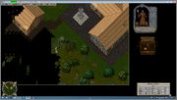Does anyone know how to increase the client draw range?
Since I've got a big screen the default 800x600 viewport became too small and changing resolution would be annoying
Razor can increase the viewport but since the client doesn't support it bigger, most of the time it leaves black fragments over the map that is pretty annoying
If anyone know how to increase it (injecting code, patching client...any) I'd be glad

Thanks
Since I've got a big screen the default 800x600 viewport became too small and changing resolution would be annoying
Razor can increase the viewport but since the client doesn't support it bigger, most of the time it leaves black fragments over the map that is pretty annoying
If anyone know how to increase it (injecting code, patching client...any) I'd be glad

Thanks
Last edited:
